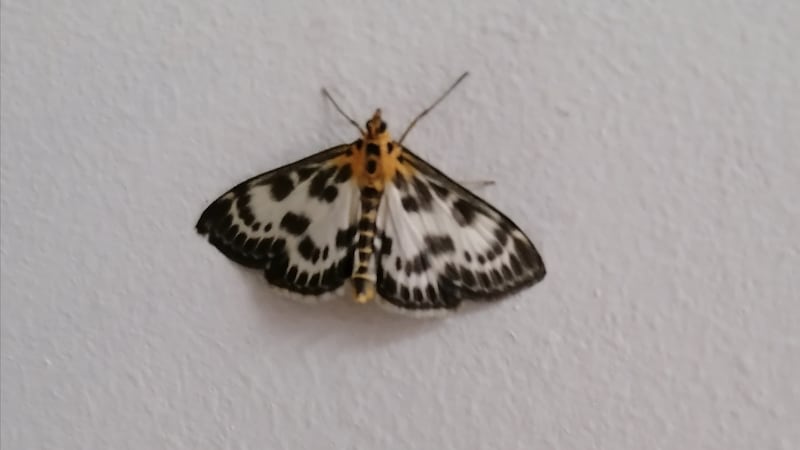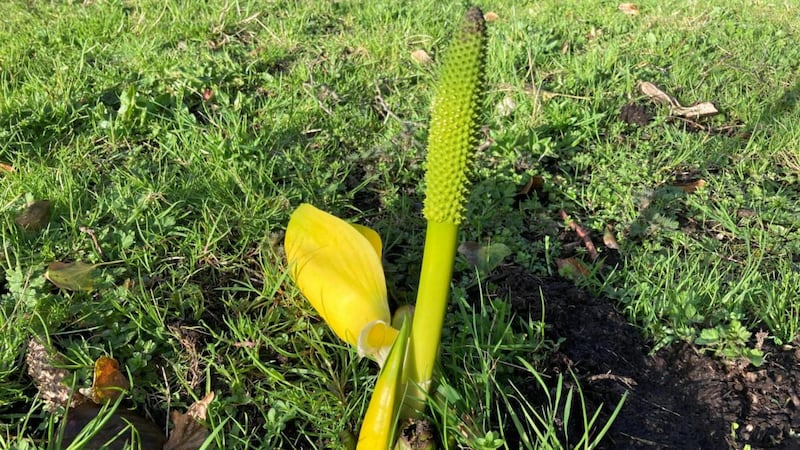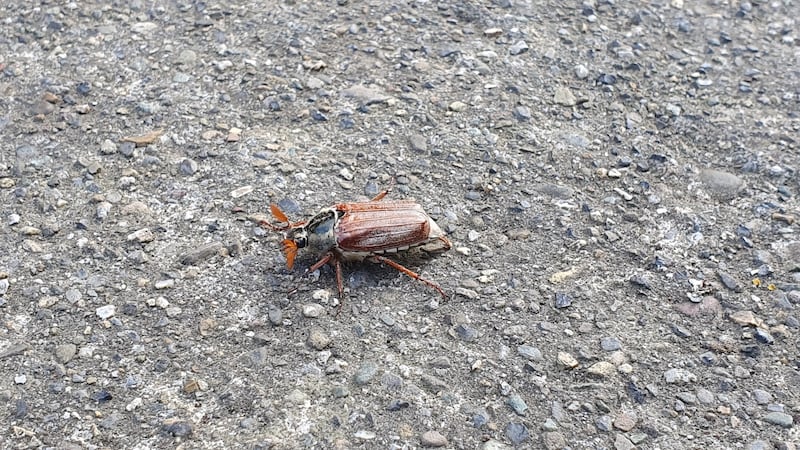I noticed this starling with a remarkable beak while walking beside the Dodder. Are these beaks unusual and what causes them to be so big? Kevin Conlon, Dublin
The outer sheaths of birds’ beaks grow continuously throughout their lives, just like our hair and fingernails (all are made of keratin), but the tips normally wear away due to continual use. Niall Hatch of Birdwatch Ireland says that sometimes birds can be affected with a virus that causes avian keratin disorder. This causes the tips of the beak to grow out of control, making it very hard for the bird to feed or preen its feathers. This seems to be the case here.

This small moth looks like a marbled white, but with the orange body it cannot be! It is inside my house and I cannot persuade it to leave; maybe it is safer inside from April frosts. Any suggestions? Paul Dunne, Galway
Moths are divided into macro- and micro-moths depending on size, micros being generally much smaller. This is a micro-moth (the small magpie), which is easily disturbed by day. It generally flies from May to September. Its colours warn birds that it tastes awful. This one is obviously having second thoughts about going out in April, despite emerging so soon.

This plant pops up in our garden in Co Donegal every year at this time and since 2021 there have been two of them. What is it? Andy Homden, Donegal
This horrible-smelling flower is aptly called American skunk-cabbage. A member of the lily family, it was introduced originally into water gardens. It dies back each year, re-emerging in spring from a stout underground rhizome. It is considered to be an invasive species in the wild and can grow very large, shading out other plants.

I recently saw this not-so-little fella (about 3cm in length) on the path. A Google search suggests it's an adult cockchafer (the maybug). Is that correct? Ronan Gill, Co Wicklow
I suppose Google has to be right some of the time. It is a male cockchafer in search of a mate.
Have you a nature query, observation or photo you would like to share with The Irish Times? Submit it, with location of the image, via our website irishtimes.com/eyeonnature










